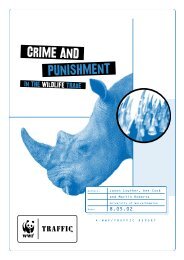In full swing: assessment of trade in orang-utans and ... - WWF UK
In full swing: assessment of trade in orang-utans and ... - WWF UK
In full swing: assessment of trade in orang-utans and ... - WWF UK
You also want an ePaper? Increase the reach of your titles
YUMPU automatically turns print PDFs into web optimized ePapers that Google loves.
Table 11.<br />
Number <strong>of</strong> gibbons <strong>and</strong> <strong>orang</strong>-<strong>utans</strong> appear<strong>in</strong>g <strong>in</strong> <strong>trade</strong> <strong>in</strong> 2003 on Java/Bali <strong>and</strong> potential impact to the wild<br />
population.<br />
Observed or estimated number *<br />
Number lost from wild<br />
population*** per year<br />
Percentage lost to wild<br />
population per year<br />
Bird Rescue Zoos** Scenario 1 Scenario 2 Scenario 1 Scenario 2<br />
markets centres<br />
H. moloch 0 15 56 116 291 2.72 6.86<br />
H. agilis 84 19 36 323 1142 0.16 0.57<br />
H. albibarbis 24 9 23 119 395 0.12 0.39<br />
H. lar 0 0 0 0 0 0 0<br />
H. muelleri 12 1 19 53 170 0.02 0.06<br />
H. klossi 0 1 1 1 2 0 0<br />
S. syndactylus 108 43 78 485 1683 0.13 0.47<br />
P. pygmaeus 60 29 107 321 1058 0.8 2.65<br />
P. abelii 0 1 12 10 24 0.13 0.33<br />
*For bird markets, as a measure the estimated number <strong>of</strong> gibbons <strong>of</strong>fered for sale on an annual basis was calculated based on the assumption that 31 markets were<br />
<strong>in</strong>cluded that were each surveyed over a one-month period. This multiplied by 12 gives the annual total.<br />
**This <strong>in</strong>cludes gibbons <strong>and</strong> <strong>orang</strong>-<strong>utans</strong> <strong>in</strong> private h<strong>and</strong>s<br />
*** Wild population is based on Table 2 <strong>of</strong> this report<br />
For other species, most notably the Javan Gibbon <strong>and</strong> the Bornean Orang-utan, the total number <strong>of</strong> <strong>in</strong>dividuals <strong>trade</strong>d<br />
on Java <strong>and</strong> Bali are large enough to have a significant impact on their populations. <strong>In</strong> both scenarios, the estimated<br />
number <strong>of</strong> Javan Gibbons <strong>trade</strong>d on Java <strong>and</strong> Bali <strong>in</strong> 2003 exceeds several per cent <strong>of</strong> the rema<strong>in</strong><strong>in</strong>g wild population.<br />
For the Bornean Orang-utan, at least <strong>in</strong> the less conservative scenario, also several per cent <strong>of</strong> the wild population are<br />
<strong>in</strong>volved. Hav<strong>in</strong>g reached this conclusion, it may be worthwhile to explore the underly<strong>in</strong>g assumptions <strong>of</strong> the model to<br />
a greater extent to see whether or not the observed pattern for these two species is <strong>in</strong>deed real or is merely an artefact <strong>of</strong><br />
the methodology employed. There are several assumptions <strong>in</strong> the model that may overestimate the mortality rates as<br />
presented <strong>in</strong> Table 11, <strong>in</strong>clud<strong>in</strong>g:<br />
1. The source populations (bird markets, zoological gardens <strong>and</strong> rescue centres) are not <strong>in</strong>dependent.<br />
<strong>In</strong>dividuals observed at bird markets may later be present <strong>in</strong> zoos or the rescue centres, <strong>and</strong> therefore the<br />
numbers cannot be simply added as to derive the total number <strong>of</strong> <strong>in</strong>dividuals <strong>trade</strong>d. This may be a valid<br />
argument for the bird markets, but not for the rescue centres <strong>and</strong> zoos, as no gibbon or <strong>orang</strong>-utan present at the<br />
rescue centres was derived from zoos, <strong>and</strong> no gibbons or <strong>orang</strong>-<strong>utans</strong> that at one time were present <strong>in</strong> the<br />
rescue centres have been placed <strong>in</strong> a zoo. Assum<strong>in</strong>g that all gibbons <strong>and</strong> <strong>orang</strong>-<strong>utans</strong> observed at bird markets<br />
at one time or another do end up <strong>in</strong> either a zoo or <strong>in</strong> one <strong>of</strong> the rescue centres, <strong>and</strong> thus discard<strong>in</strong>g all data from<br />
bird markets, will have no effect on the Javan Gibbon but will lower the mortality rates <strong>of</strong> Bornean Orang-<strong>utans</strong><br />
<strong>in</strong> the least conservative scenario to 1.15%. Note that there was a high consistency <strong>in</strong> species composition <strong>and</strong><br />
numbers between the 2003 survey data, <strong>and</strong> the average for the period 1994-2003, <strong>and</strong> restrict<strong>in</strong>g the analysis<br />
to 2003 data only does not lead to significant differences <strong>in</strong> the outcome <strong>of</strong> the model.<br />
2. Turnover is considerably higher than assumed <strong>in</strong> the model. Many <strong>of</strong> the gibbons <strong>and</strong> <strong>orang</strong>-<strong>utans</strong> that have<br />
been observed at markets, <strong>in</strong> zoos, <strong>and</strong> when arriv<strong>in</strong>g at the rescue centres are still very young, <strong>and</strong> are<br />
therefore likely to have been recently removed from the wild. Hence, the population <strong>of</strong> gibbons <strong>and</strong> <strong>orang</strong>-<br />
IN FULL SWING:ASSESSMENT OF TRADE IN ORANGUTANS AND GIBBONS ON JAVA AND BALI,INDONESIA 34



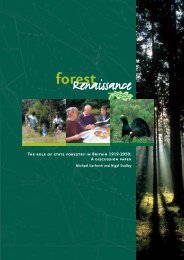
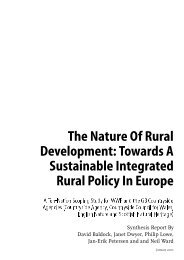
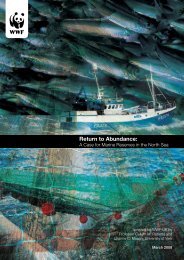

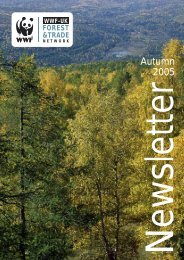

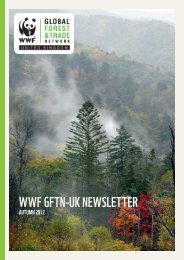
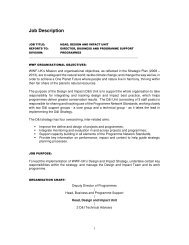
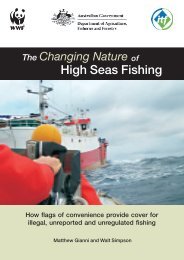
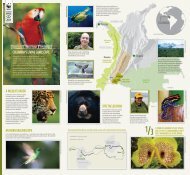
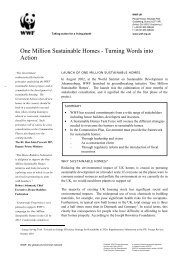
![[PDF] Causes for concern: chemicals and wildlife - WWF UK](https://img.yumpu.com/31929970/1/184x260/pdf-causes-for-concern-chemicals-and-wildlife-wwf-uk.jpg?quality=85)
